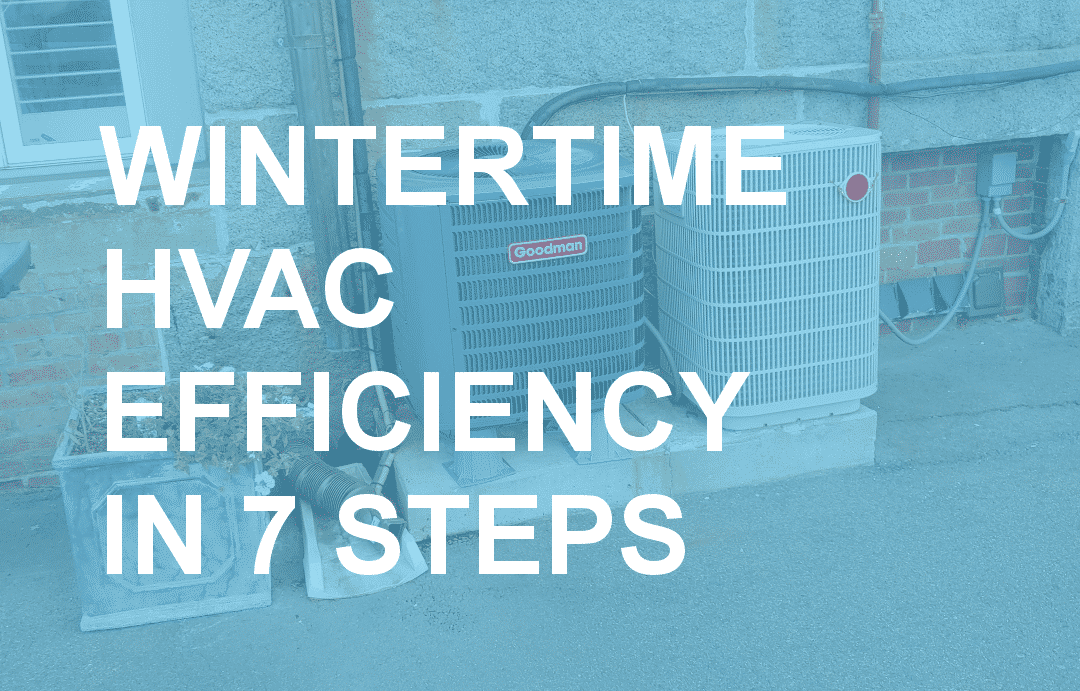As summer fades into fall, and the days grow cooler, we might be anxious to start heating our homes and offices. But changing from air conditioning to heat isn’t as simple as flipping a switch. Without proper maintenance, our HVAC systems are far more inefficient, wasting precious energy.
To optimize energy efficiency, lower electric bills and reduce carbon consumption, it’s vital that property owners and facility maintenance staff take certain steps to prepare HVAC systems for winter. Whether you have a single furnace or multi-unit system, you should always winterize your HVAC so that it continues to operate at peak efficiency.
Replace the Filter
One of the most important – and easiest – steps a property owner can take to maintain an HVAC unit for longevity and efficiency is to regularly replace the air filter. When air filters are dirty, furnaces have to work harder to move air, increasing the energy needed to operate. If the airflow becomes blocked, the entire system can malfunction. Always change your air filter before turning on your furnace. For best results you should check the filter once a month and replace it if needed.
Check for Drafts
Some of the primary culprits of inefficient HVAC systems and rising electric bills are drafts caused by air leaking around windows and doors. Drafty windows and doors not only allow chilly air to enter a building, but they also let the warm air leak outside. Before operating your furnace in the fall, check caulking and weather stripping around windows and doors, replacing and repairing any cracked or broken areas. For increased energy efficiency, you also can seal attics with weather stripping and check for damaged insulation in attics, crawlspaces and basements.
Clear the Airflow
Before turning on your heating system in the fall, be sure to inspect all heating vents and registers, removing any obstructions. While you’re at it, go ahead and vacuum any dust that has collected inside them over the summer. Adjusting ceiling fan blades so that they rotate clockwise will also help pull up warm air from floor vents. If your heat is expressed from above, a ceiling fan turning counterclockwise can push the warm air down.
Adjust Thermostats
Recommended thermostat temperature settings vary greatly from summer to winter. While air conditioning systems operate at peak efficiency with thermostats set to 78 degrees Fahrenheit, the optimal wintertime setting is about 10 degrees lower. That doesn’t mean you can’t reduce energy consumption even more, of course. Lowering the furnace temperature setting by an additional 10-15 degrees for eight hours a day – while everyone is at work, for example – can further reduce heating bills by as much as 15 percent, about 1 degree per 8-hour period. Programmable and smart thermostat technology can make these temperature adjustments simple and effective.
Hire an Inspector
Early autumn is also a great time to schedule professional maintenance for your HVAC system(s). Units can become filled with dirt or debris that can cause them to overheat and malfunction, and small issues can turn into costly repairs if not addressed in a timely fashion. Just one cleaning can pay for itself in reduced energy costs. While the technician is there, he or she can replace your filter and check for any dangerous leaks as well.
Test the Furnace
Before temperatures get low enough to crank on the furnace, you want to give your HVAC heating system one or two test runs to ensure that it’s ready to operate when you need it. You’d hate to need an unexpected repair after the first snow falls. Likewise, ease the system into its winter functionality. Start with lower thermostat temperatures for short periods of time, transitioning slowly toward hotter settings until you reach your desired comfort level.
Delay Turning on the Furnace
Obviously, the best way to reduce the energy consumption of your HVAC system is to simply not use it. Delay running your furnace for as long as you can during the autumn months. Take advantage of warmer days and cover yourself with an extra blanket at night until the temperatures become too uncomfortable. You’ll find your property contains the daytime warmth much longer if you’ve already sealed any air leaks and drafts.












